Intel Alder Lake-N is simply awesome. We have been using the new fanless Intel N100 and N200 units, based on CWWK designs, for several weeks now, and they are game changers. there is some new functionality that folks will be excited for. Some folks will be less excited about changes, but the new units represent a big shift in the fanless firewall and virtualization appliance space.
Fanless Intel N100 Firewall and Virtualization Appliance Overview
For this, we have a video covering both the Intel N100 and N200 versions of this fanless firewall and virtualization host appliance:
As always, we suggest opening the video in its own tab or app for the best viewing experience.
Getting these units was nothing short of challenging. We ordered them in early April, and they arrived in May. We ordered two N100 units from different sellers with different pictures on their listings and received two almost identical units. Not only did the N100 units share the same chassis, but the N200 system we ordered did too.
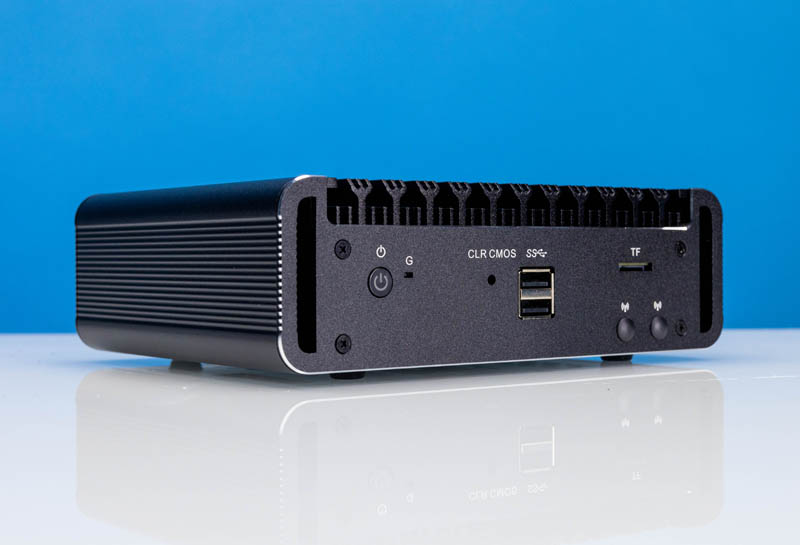
The base barebones are $216 but fluctuate based on the day. Here is an AliExpress affiliate link to the one we purchased. We ordered a configured unit for $332 which was not financially prudent, but we wanted to see what components were in the bundle.
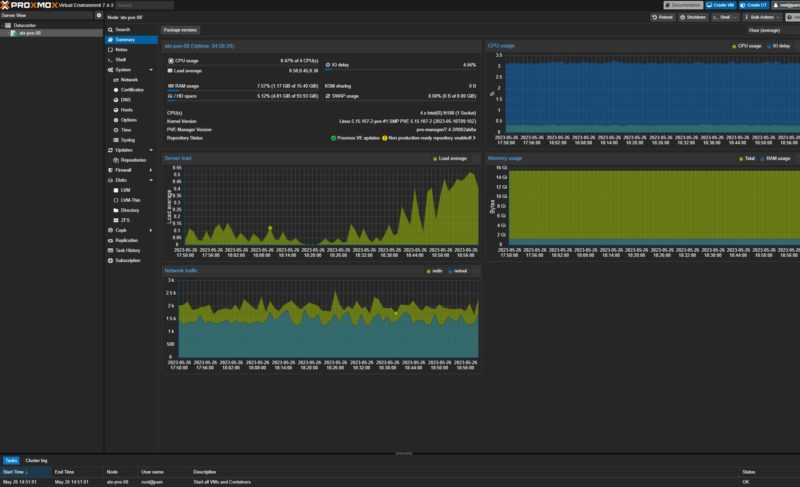
We ordered the Intel N100 instead of the N95 just because it was a $10 delta between the two. Our sense is the N100 is going to be a bit more exciting for our readers since one of the biggest questions we get is the performance. The N95 is going to be closer to the N5105/ N6005 previous generation, so we are starting at the N100 Intel Alder Lake-N part.
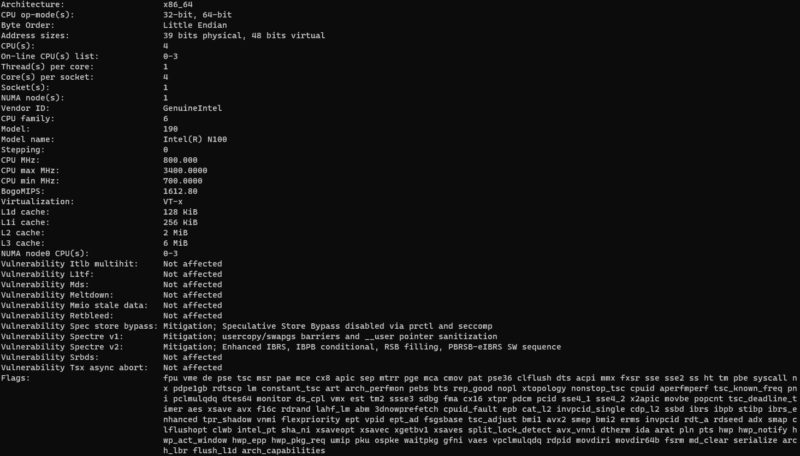
Overall, ~$216 for barebones feels reasonable for a 4x 2.5GbE solution. Paying an extra $110 or so for the 16GB DDR5 SODIMM and 512GB NVMe SSD felt too expensive since those are roughly $75 or so on Amazon.
With that, let us get to the hardware.
Fanless Intel N100 External Hardware Overview
Regular STH readers will find the chassis familiar. We saw it in our Intel J6413 fanless firewall review and in our 6x 2.5GbE round-up where it was one of the good chassis.
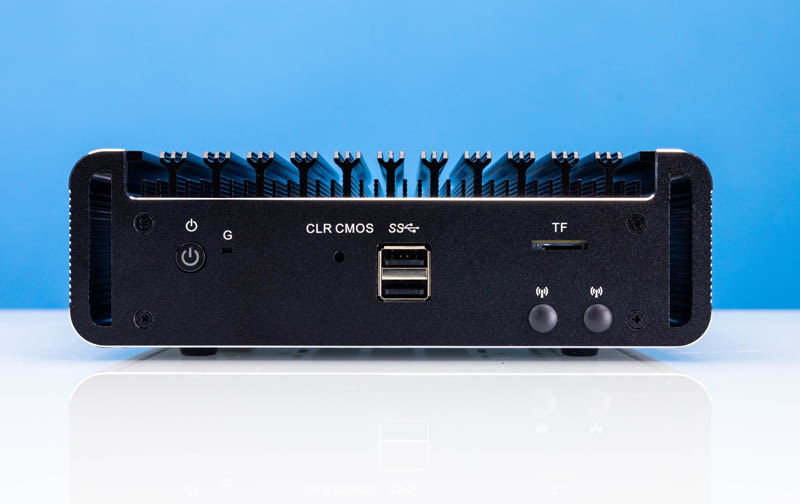
The front of the system has a power button, TF (microSD) card slot, and two USB Type-A ports. There is a recessed clear CMOS button. Then there is something marked G. We are unsure what to call this. Perhaps it is the G switch, button, or spot? One also gets two wireless antenna holes to use, but our unit did not come with WiFi.
On the back of the unit, we get two more USB Type-A ports, a DisplayPort and HDMI port, and a 12V power input. The big feature here is a set of four 2.5GbE ports based on the Intel i226-V.
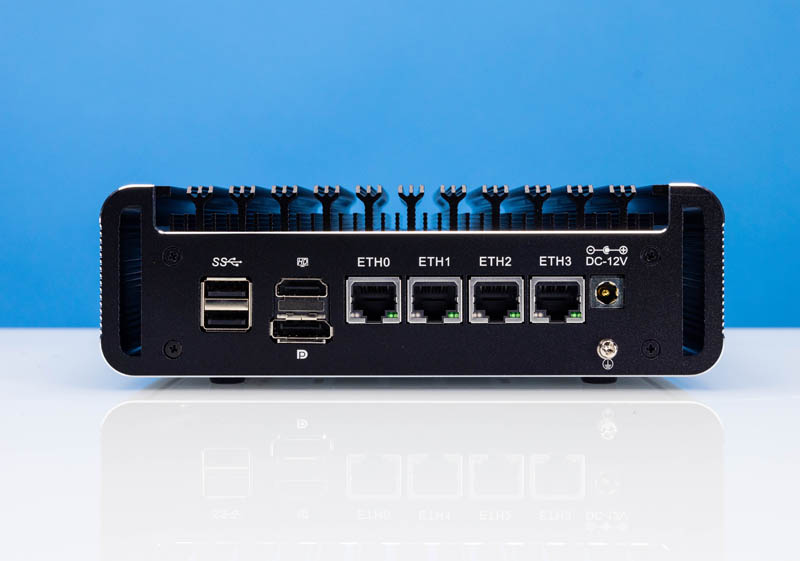
The top of the unit has fins.
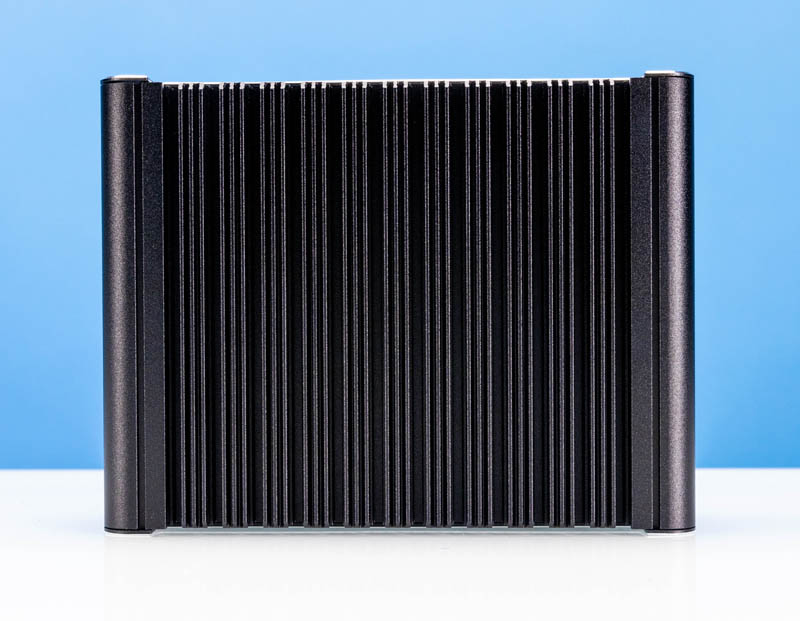
The side of the unit has more fins.
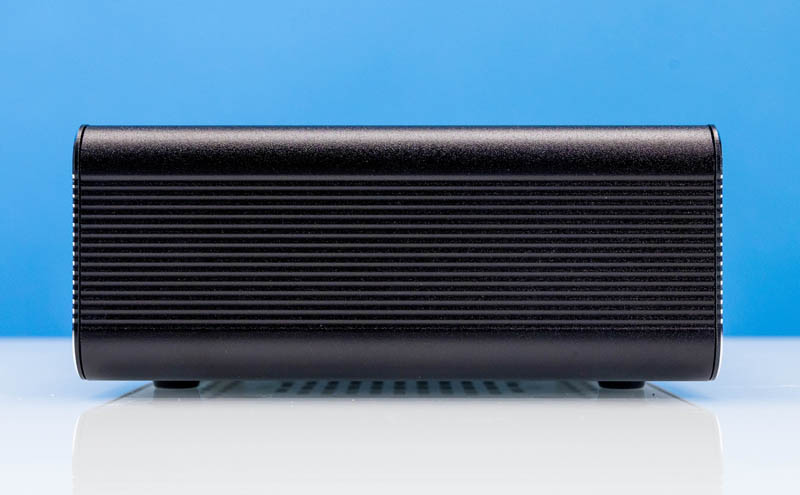
The bottom of the unit has vents. We are going to quickly note that you may see that there is now a mesh over the vents. This is an upgrade on these newer units and is one of the points where we see the quality has increased.
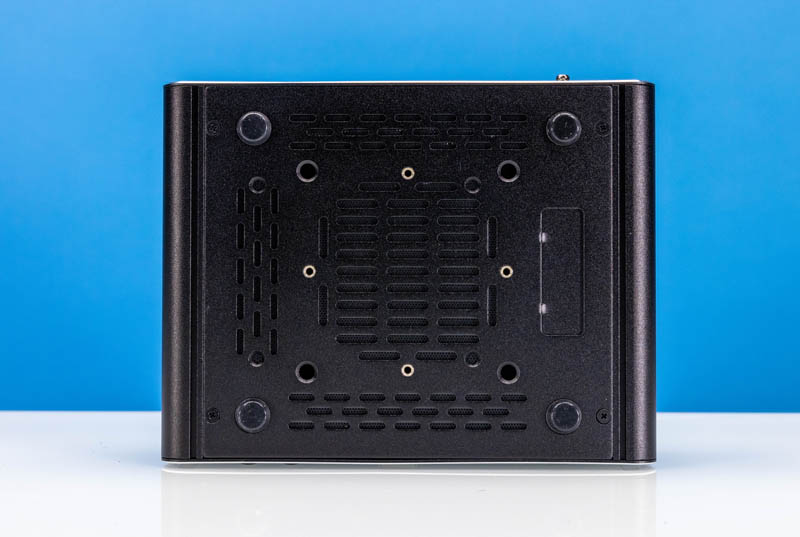
Next, let us get inside the unit to see more detail.

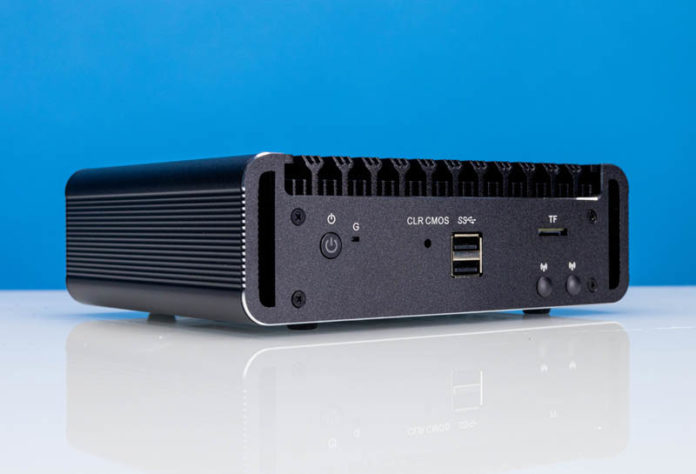

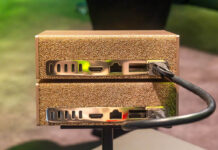

Check the link on Aliexpress, gives 404
What about the i3-N305 version of this unit – it seems like 2x cores @ 3.8Ghz is way better, no?
The AliExpress link worked for me since I ordered one this morning. I’ve gotta say I was perplexed by it for just a moment when it was only $206. Then I saw that was for the N95 by default so I had to do N100. That’s $216 but it’s an easy selector tool
Now i’m waiting for it to ship
For anyone interested, there is a lot of useful info in the Nxx thread on the STH forum.
You can wring a little more performance out of the N100 with some BIOS tuning where it can slightly surpass the N200.
How’s the coil squeal?
Idle power is one area they can do an awful lot here. I’ve a selection of i5 and i7 laptops that can idle below 2w with screen off (only one Intel NIC, but less than 1-2w for 3 more). My aging Qotom i5-7200u unit with six 1 gig NICs idles below 5w.
I’d expect these with 4x i226 to be around that 5w figure. I know some in the Nxxx thread users are under 10w with tweaks, but still.
@PCK
Where did you see coils in the supplied pictures?
If there are any coils they are nicely hidden.
Such a nice one!
We plan to design our own models with N305, let’s expect the review!
I’d love one of these awesome fanless devices to come with 10gbe some day. Even just two ports
come on guys, the “G” on the front is labeled in one of the pictures: “GPIO”. so prolly a LED that can be controlled.
unfortunately no sfp+ :(
any throughput testing?
Hello there,
What about problems with data loss\disconnects on Intel i226-V/i225 adapters? There are countless reports with issues while using these adapters…
https://community.intel.com/t5/Ethernet-Products/Intel-R-Ethernet-Contoller-I226-V-connection-drop-for-a-few/td-p/1446822
https://community.intel.com/t5/Ethernet-Products/Intel-I225-V-connection-issues/m-p/1321431
https://community.intel.com/t5/Ethernet-Products/Intel-I225-V-disconnecting-in-Windows-11/td-p/1376227
Do you actually run any test at 2.5Gbps?
Obi-Wan – we are usually not running windows, and these are not Z790 chipset motherboards. It is a different PCIe layout.
Just for some sense, we literally have over 100 ports running 24×7 linked to 2.5GbE switches for the switch testing.
Chinese designers lost serial console in this new generation, which is pity :-(
Is this compatible with VMware?
I purchased one of these to use as a Pfsense firewall. Unfortunately it would crash nearly every time I tried to install a package, restore from a backup or upgrade to Pfsense Plus. For me this was a big disappointment because it is essentially useless for me.
@Steven – I’m having the same issue with mine, it seems to be quite crash-prone, but I’m not sure if it’s a memory issue, NVMe, CPU, or what… very strange behavior and it happens at different times (e.g. after live booting off USB, while installing an OS, etc.).
It doesn’t seem to be a thermal issue, either.
@Steven @Jeff how about installing Proxmox, then pfSense as a VM?
Anyone find a source for the 80mm fan with JST connector for these units. While it doesn’t absolutely need the fan, for my case, bit of noise isn’t an issue and cooler is always better. :)
HAVE PFSENSE / PROXMOX GOTTEN BETTER?
Yes. pfSense 2.7 CE and Proxmox VE 8.0 were released.
Hello, were you able to enable IOMMU PCI passthrough to VMs on PROXMOX? What I am seeing is that all related settings in the BIOS are enabled but PROXMOX reports that IOMMU is not enabled.
Answering my own question above, apparently, IOMMU for Intel CPUs is disabled by default and needs to be manually enabled, which involves several steps. Also found a good, though incomplete, overview of setting up the IOMMU here on STH https://www.servethehome.com/how-to-pass-through-pcie-nics-with-proxmox-ve-on-intel-and-amd/
Any hint on where VT-d is enabled on this BIOS?
I can’t get Proxmox 8 to recognize IOMMU: No IOMMU detected, please activate it.See Documentation for further information.
Changed (/etc/default/grub): GRUB_CMDLINE_LINUX_DEFAULT=”quiet iommu=pt intel_iommu=on”
update-grub
I hit 58C in Memtest86 of 8GB of DDR5 on the CWWK N100, do I need to fix the heat sink?
How is the thermal performance of these units? the N5105 units are notorious for running hot, hopefully these are better/better thermal paste?
Had some issues with this running Proxmox where it would hang after running for a couple of hours. These issues disappeared when I disable cstates entirely in the BIOS